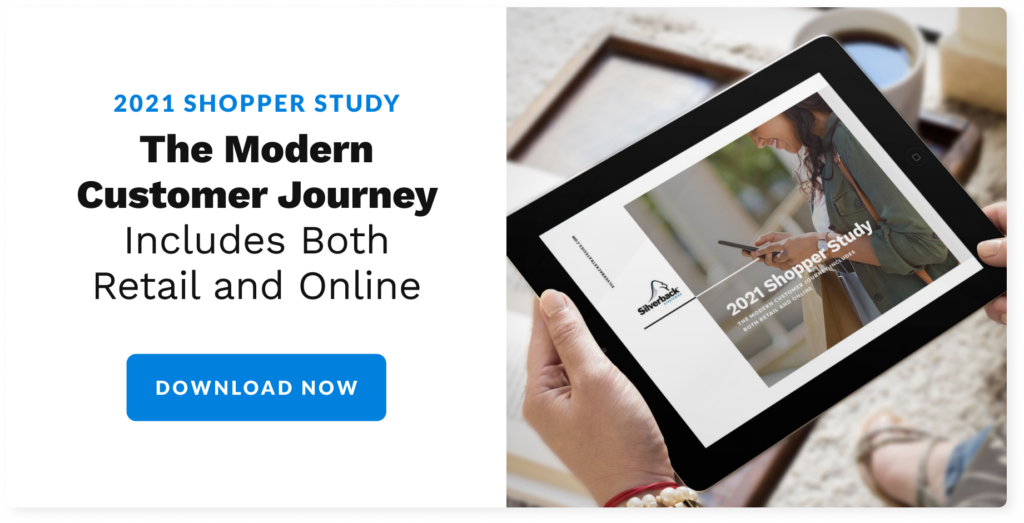Table of Contents
In any given year, the holiday season can be make-or-break for many mid-market retail businesses. In 2020, the stakes were even higher.
COVID-19 forced retailers to limit in-store capacity and enact new safety procedures. Retailers needed to innovate and find new ways to deliver products to consumers. But what impact did this pandemic have on holiday shopping? How will that influence future buyer behavior?
To answer this question, Silverback Strategies polled 1,048 consumers between Christmas and New Year’s Day, giving this study a unique look at the actual buying behavior of holiday shoppers during the global pandemic. Download the full study here:

This article shares three key statistics focused on helping mid-market retailers navigate a shifting business landscape.
83% of shoppers purchased online
According to our survey, more than 83% of respondents purchased gifts online during the 2020 holiday season; for consumers who spent more than $500 on holiday gifts, that number jumps to a staggering 94%.
Not all of these website users went exclusively to ecommerce giants like Amazon. In fact, more than half of consumers who purchased gifts online said they visited a retail store website. For mid-market retailers, little investment in digital marketing carries a high opportunity cost. Online purchasing is the norm in today’s society.
75% of shoppers traveled to a physical store location
Despite the COVID-19 pandemic, retail stores still saw considerable foot traffic. Three-in-four shoppers traveled to a physical store location. Of this group, nearly 80% made traditional in-store purchases. Others took advantage of curbside pickup and buy-online-pick-up-in-store (BOPIS) to skip the lines and maintain a safe social distance.
While ecommerce is alluring, retailers with multiple store locations should maintain a focus on driving in-store foot traffic. This can be done today on ad platforms like Facebook, but will become more challenging as third-party cookies are phased out over the next few years. Businesses who prioritize building and scaling a first-party data strategy will have an advantage in the coming years.
45% purchased a product online after they saw it in store
The research findings suggest “purchase intent,” or how likely a buyer considers a purchase at a given time, was higher in-store than online. This was particularly true of certain product categories, like jewelry and watches, where buyers were nearly 30% more likely to consider buying at a retail store compared to online. Retail locations have become somewhat of a product showcase rather than a point of purchase for products requiring more consideration before purchase.
Yet despite higher purchase intent at stores, an incredible 45% reported purchasing a product online after they saw it in a retail store. Clothing, toys and consumer electronics were the top product categories purchased through this method.
Conclusion
In-store and online are not competing channels, but equally important parts of the shopping experience. Retail marketers should consider how both can complement each other.


